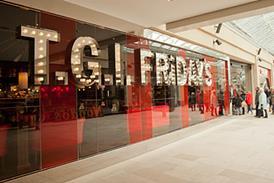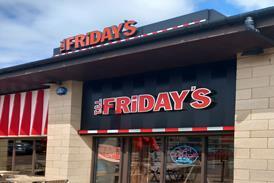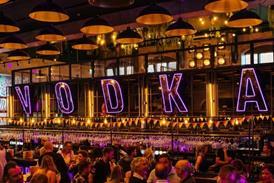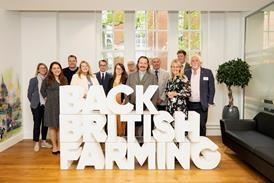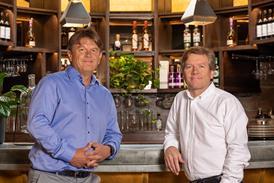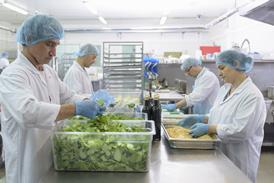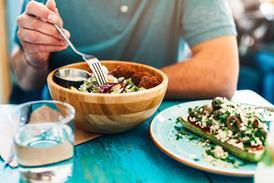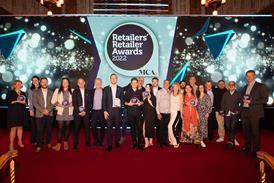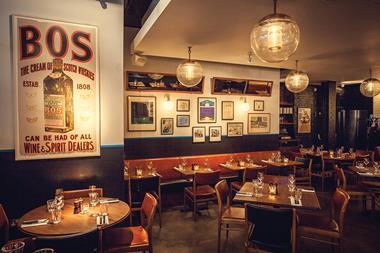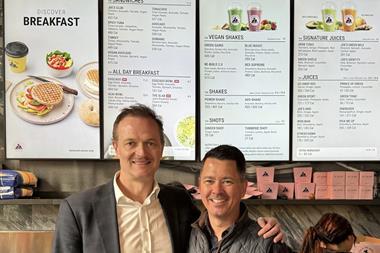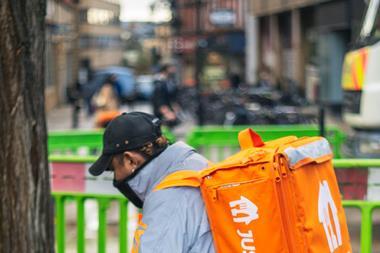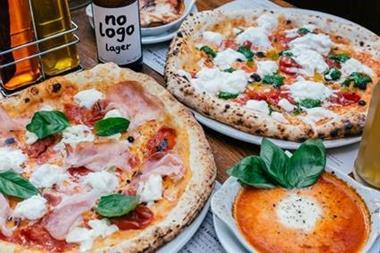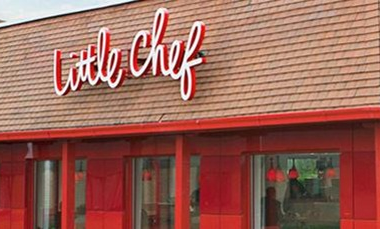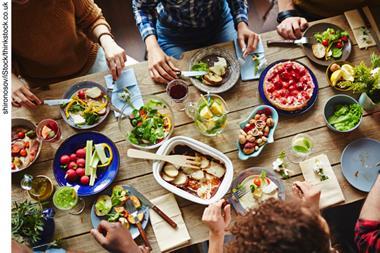Three years ago, a group of operators came close to forming a syndicate to control the delivery side of their businesses, in the face of growing influence among the ‘disruptors’. Fast forward to 2019 and Deliveroo has introduced a wave of its own virtual brands into its Editions programme and is also thought to be close to securing its first bricks and mortar site in the UK. Meanwhile, Uber Eats is believed to be trialling integration of its taxi fleet into its food delivery operation. With this often fraught relationship seemingly reaching boiling point, MCA editor James Wallin asks if the time has come for operators to take back control. With comment from MCA’s contributing editor, Peter Martin, on why ownership of technology is key to this power struggle.
Things could have been very different. In 2016 a group of more than 20 leading operators came close to forming an alliance to pool resources and control the delivery of their food. The plan was backed by an industry heavyweight. However, when two key brands broke ranks, the project fell apart.
In 2019, the big three delivery companies have become major forces in the industry. Just Eat, Deliveroo and Uber Eats wage a daily war for the affections of brands, each seeking to top the other with the range of their services and partnership benefits. Meanwhile, operators are facing commission fees of up to 35% to have their food delivered to customers’ homes. The sheer scale of the appetite for restaurant-standard food eaten at home seems to have shocked everyone – maybe even the ‘disruptors’. In an age of cost-conscious consumers, people are sometimes paying 20% more per dish to eat at home than on site, and are happily lapping it up.
This week, I have spoken to a number of operators deeply concerned about the balance of power between the restaurant brands and the couriers delivering their products. The Deliveroo Editions site in Crouch End is now home to a number of the platform’s own virtual brands – including Nonna’s Pizza, Knead Neopolitan, Peach’s Fried Chicken, Moxie Burger and Fat Rabbit Chinese.
One said: “The message has always been that virtual brands would be developed but that would be to plug gaps in certain areas where a particular offer wasn’t available. That is completely different to introducing own-label brands that are clearly there to appeal to the same customers as established brands they already work with.”
A Deliveroo spokesman said: “We are proud that our growth supports restaurants to reach new customers, boost sales and support innovation. Virtual brands are a great way of helping restaurants and chefs try new ideas and grow their businesses. To support this we have been trialling a number of virtual brands at our Editions site in Crouch End.”
Meanwhile, Deliveroo, which opened its first bricks and mortar restaurant in Hong Kong at the end of last year, is understood to be close to securing its first physical location in the UK, with a shopping centre unit in west London under negotiation. The site would be a multi-branded, food hall-style operation but it is not known whether that would include its own concepts.
In recent weeks, several brands have jumped ship from Deliveroo to rival, Uber Eats, including MEATliquor, The Real Greek and Franco Manca. It is part of a charm offensive from Uber to many of the UK’s leading restaurant brands, as it seeks to match its delivery scope with an offer that can compel customers to order through them. The poster child for the gig economy is also thought to be experimenting with the integration of its taxi operation with its delivery arm, with a trial in Glasgow seeing cab drivers carrying food orders as well.
One operator who has become increasingly exasperated with the influence of delivery firms said: “We are stuck in a vicious circle where we are benchmarking the topline against everyone else who is topping that up with delivery, but we are being murdered on the bottom line.
“The whole situation is insane. Traditionally you expect to pay less for a takeaway than to sit in a restaurant – and I think people completely appreciated why that was. Now you can charge £9 on delivery for something that is £7 in the restaurant. And people will pay it.
“We have got into a situation where we are paying someone to take away control of our brand and we are paying 25%, 30% maybe even 35% for the privilege.
“Maybe it’s time that we got together and said enough is enough, we need to control this. But, to do that, everyone would need to be in. We need to stand together.”
Another leading restaurant operator disagreed, saying: “How could we compete with the scale and the technology they have? I just don’t see that happening. All I can hope is that as the big players fight for the brands people want to order, that puts more power back into our hands and they start to think about what they can do to attract us, not the other way around.
“I don’t think the virtual brands will ever be a real threat. People will try them but you can’t create a brand that people will take to their heart through an algorithm. That blood, sweat and tears that goes into creating a restaurant, they need that, they can’t replicate it.”
Comment by MCA contributing editor, Peter Martin:
Concerns about delivery, the emergence of delivery specialists and the impact on the eating out market are not new. But it does feel like they are now coming to a head – especially as those specialists are developing their own food offers.
Across the country, delivery still accounts for a relatively small proportion of sales – we’re probably talking 3% to 4%. But, in big urban areas and for some particular companies it’s sometimes into double figures and that makes it an important revenue source and a difficult cycle to get out of.
What’s key here is the competition for the occasion. A delivery company creating own-brands can say it’s not doing ramen so is not competing with Wagamama, but for that one occasion when someone decides they want to eat at home it is. It’s not about food choice, but choice of occasion. Multiply that by thousands and you can see the impact.
There are parallels here with what’s been happening in the grocery and hotel markets. Both have been hit by disruptive forces that they have felt compelled to join in with. But we’ve seen the disputes between Ocado and Waitrose, and M&S now investing in Ocado, and the legal issues around hotel room aggregators.
Relationships have been difficult, but in these markets the big players have had scale to compete and at least offer something the online-only businesses can’t compete with. Tesco or Marriott can offer me points to trade with them directly that I can redeem only with them. The problem for operators in a fragmented restaurant market is that they can’t match the national scale of the delivery operators.
There is clearly an opportunity with white-label - Domino’s have shown it can be done - but it would probably require the industry as a whole to partner with someone with the technical capability that can give them that platform. Delivery has offered up a lot of opportunities in supplementary income streams but it is a fraught relationship, underlined for some by Will Shuh (Deliveroo founder) going on TV on My Million Pound Menu as a restaurant investor.
Technology and data-ownership are going to be key and it’s an area where the industry has always struggled to keep up, and the important question coming off that is who owns the customer. There should be a lot of operators looking at the contracts they have signed and asking how much control over their brand they really have.
Restaurant brands still hold a lot of power and customer-loyalty, and the risk in the current situation seems as great for the delivery specialists as it is for the restaurant operators. But it should concentrate operators’ minds on competition and how their brands can be more than just restaurants or pubs but true brands that can transcend platforms.
Precis
The age of deliverance
Three years ago, a group of operators came close to forming a syndicate to control the delivery side of their businesses, in the face of growing influence among the ‘disruptors’. Fast forward to 2019 and Deliveroo has introduced a wave of its own virtual brands into its Editions programme and is also thought to be close to securing its first bricks and mortar site in the UK. Meanwhile, Uber Eats is believed to be trialling integration of its taxi fleet into its food delivery operation. With this often fraught relationship seemingly reaching boiling point, MCA editor James Wallin asks if the time has come for operators to take back control. With comment from MCA’s contributing editor, Peter Martin, on why ownership of technology is key to this power struggle.


